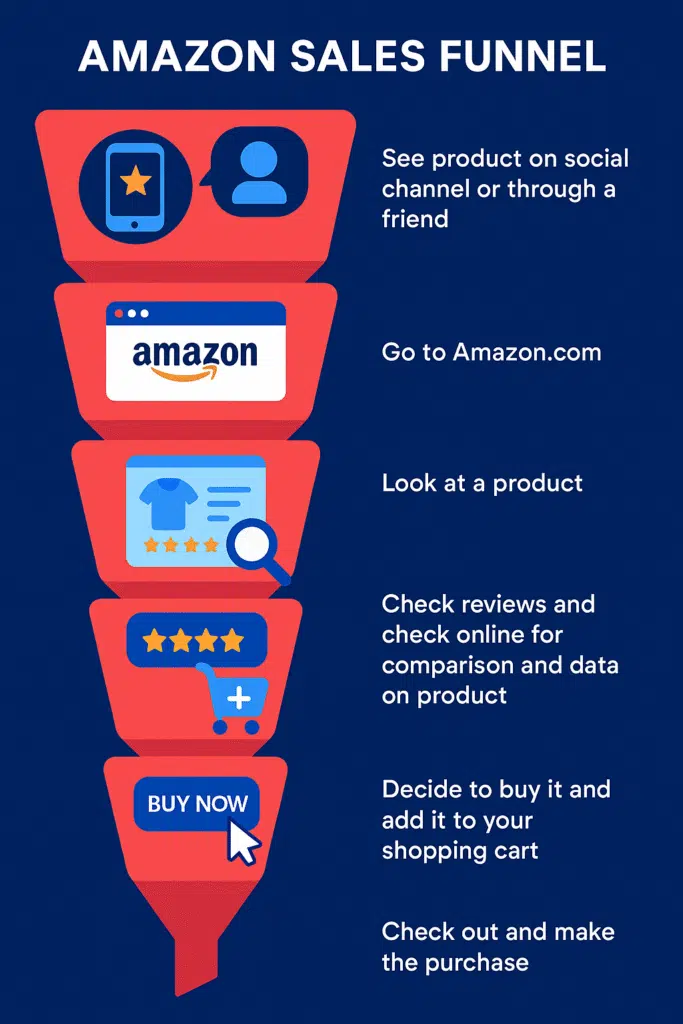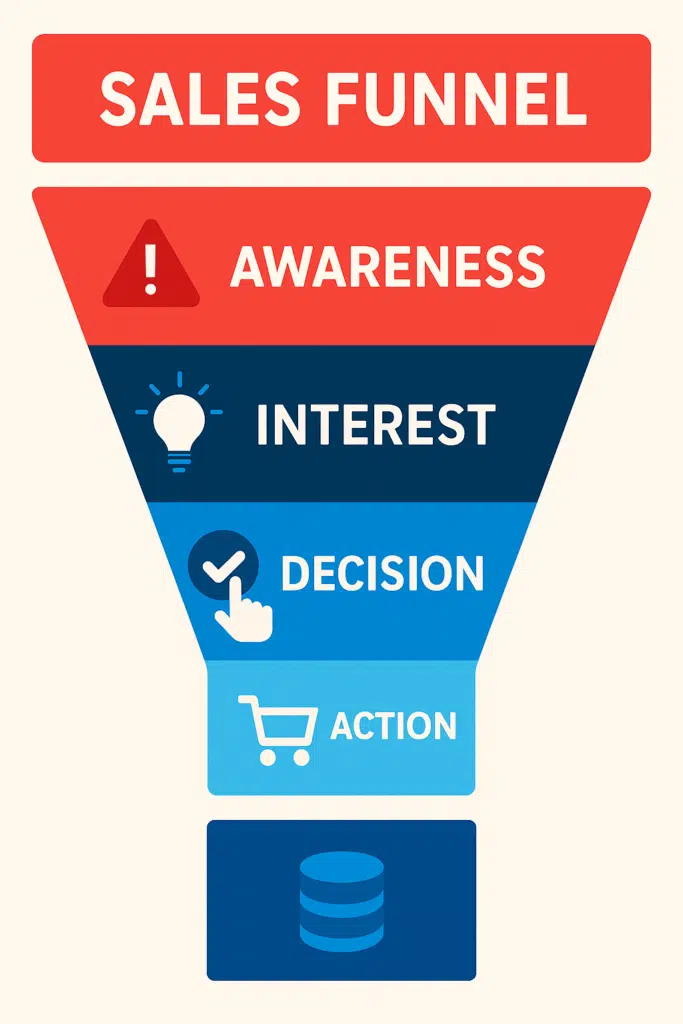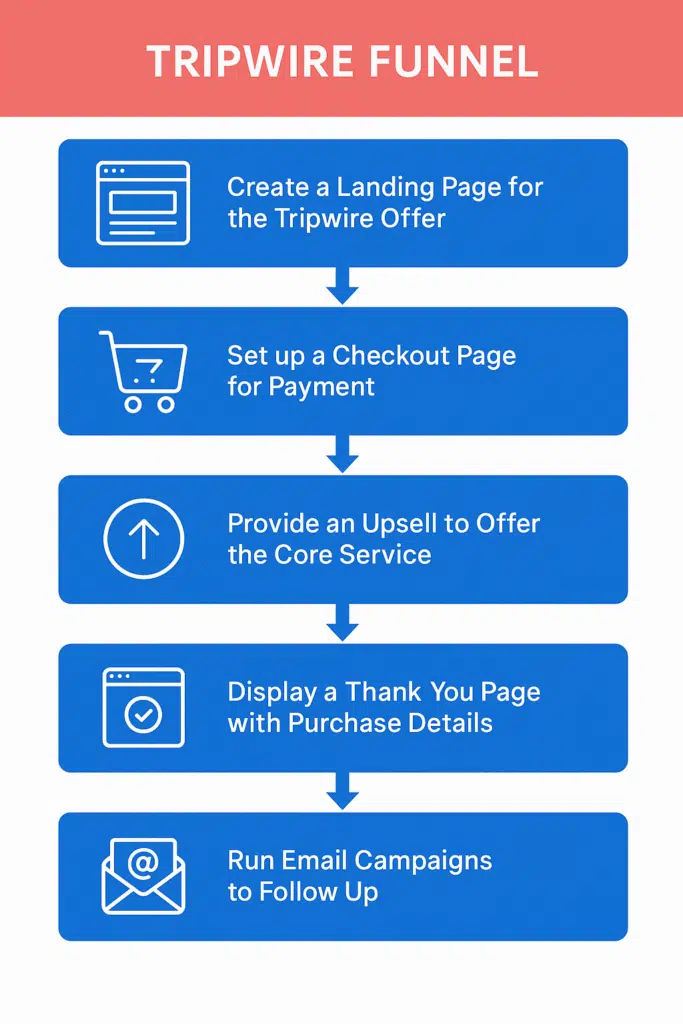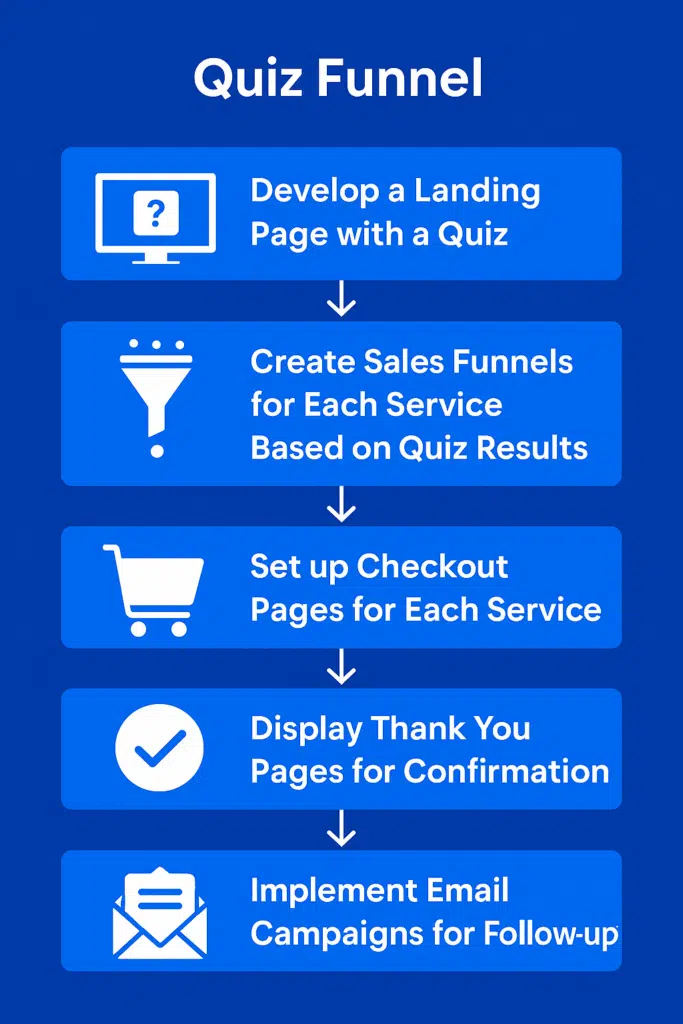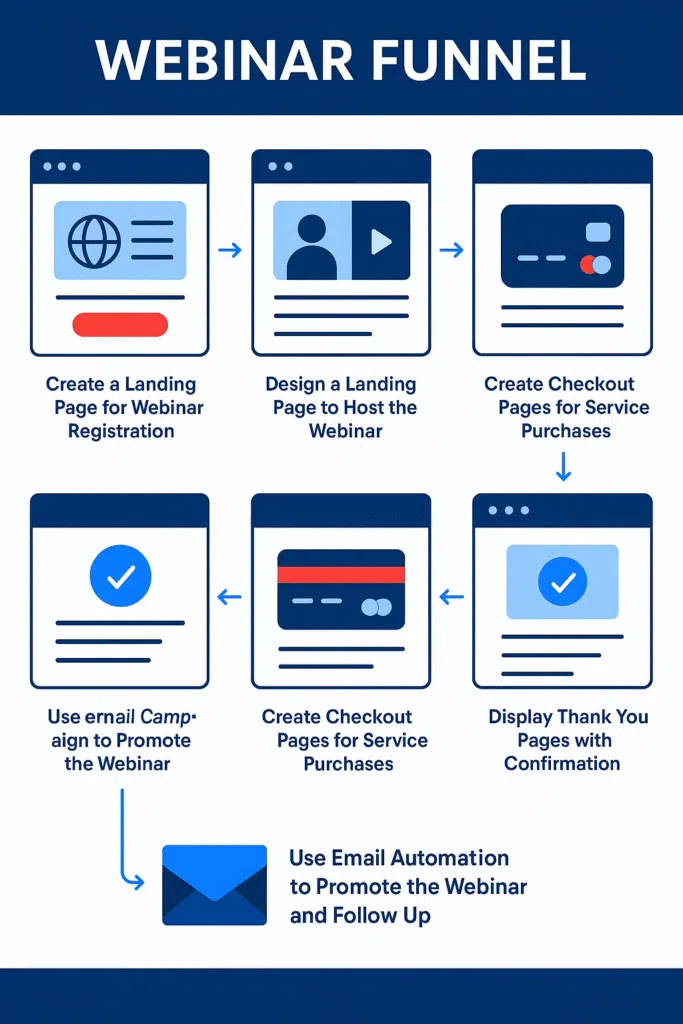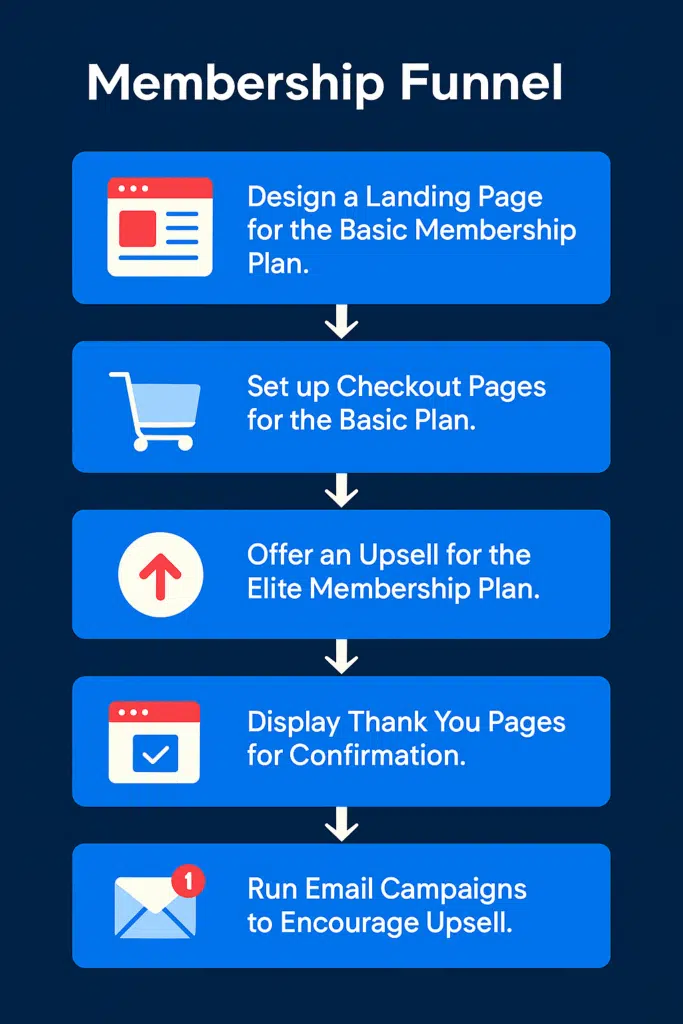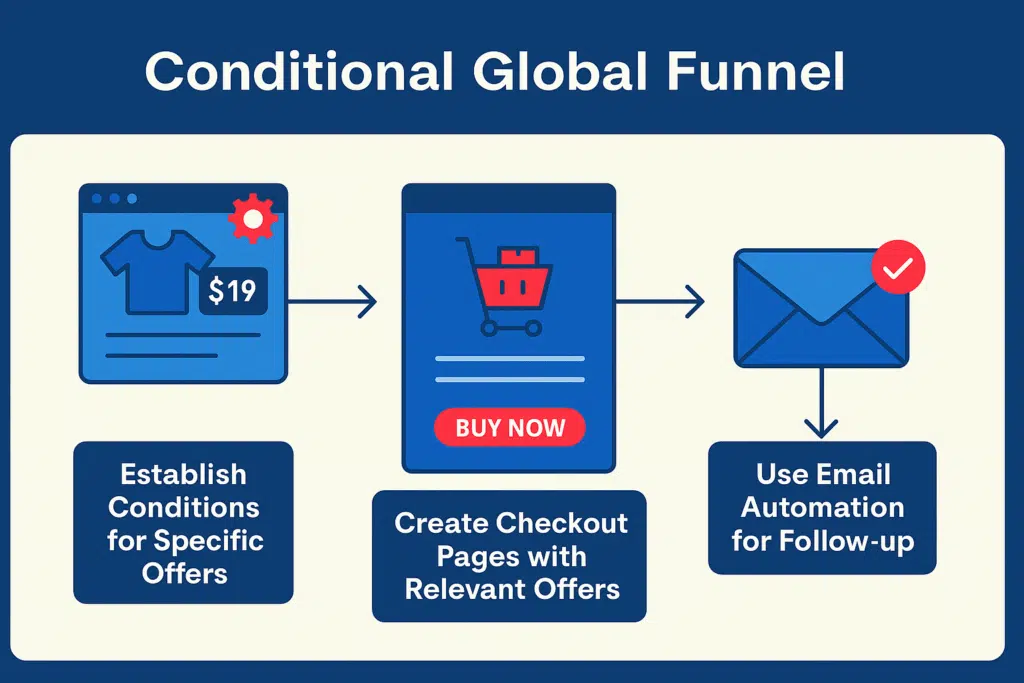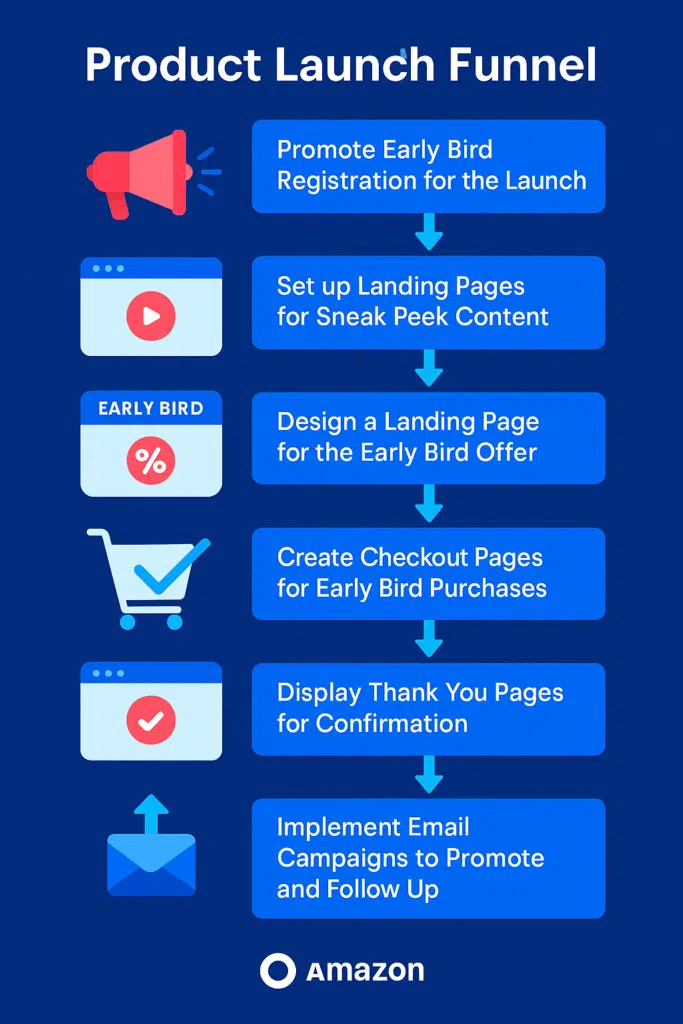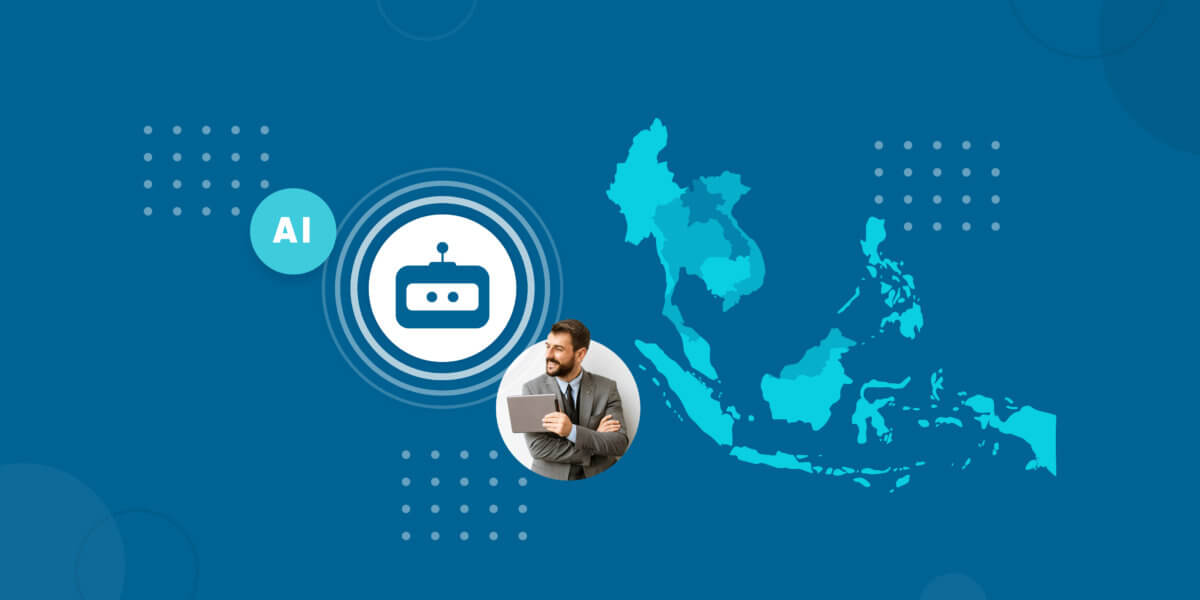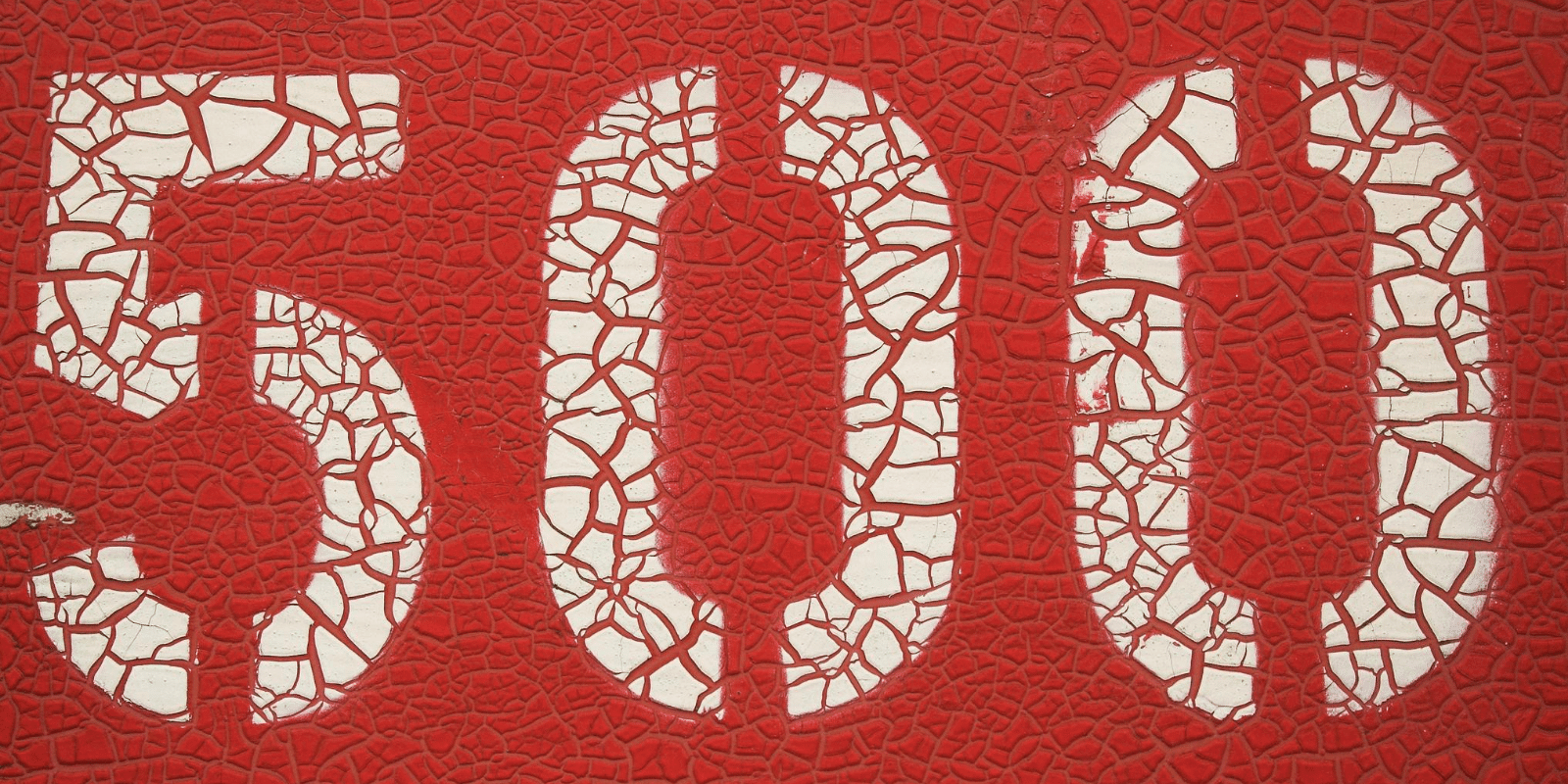Stay Ahead with 2025’s Top Sales Funnel Templates
- June 10th, 2025 / 6 Mins read
-
Harshitha Raj
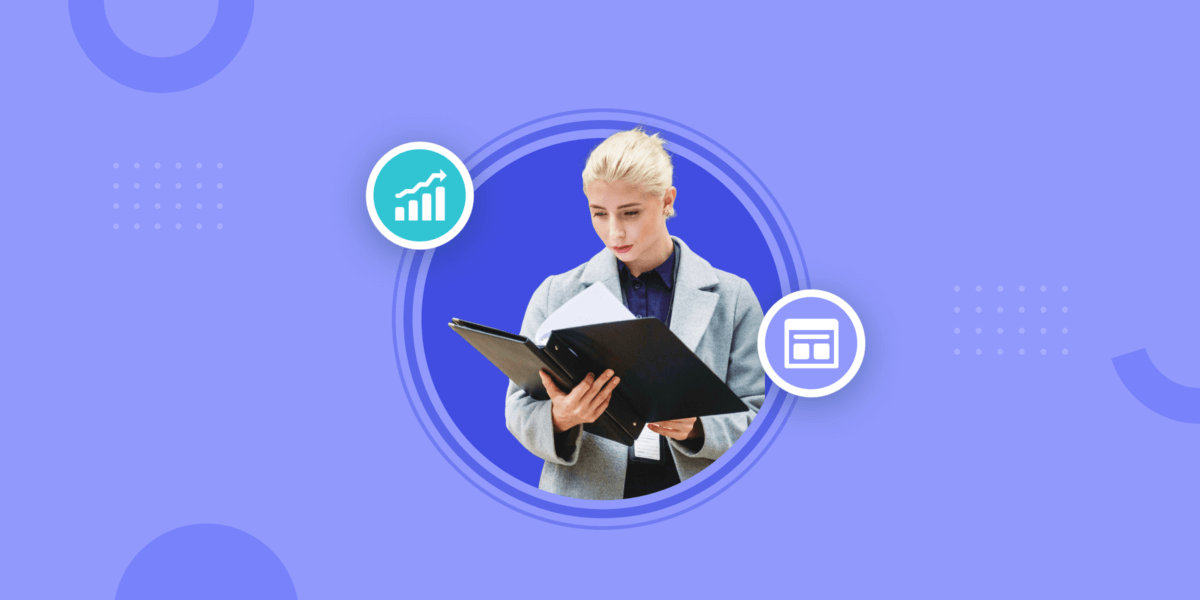
Stay Ahead with 2025’s Top Sales Funnel Templates
- June 10th, 2025 / 6 Mins read
-
Harshitha Raj
In 2025, the sales funnel isn’t what it used to be.
What was once a predictable, top-to-bottom process has now evolved into a dynamic journey shaped by real-time interactions, AI-powered recommendations, and hyper-personalised experiences. If you’re still working with a rigid sales funnel template, it’s time to rethink your approach.
At its core, a sales funnel maps how prospects move from awareness to decision but in today’s landscape, buyers no longer move in straight lines. Instead, they jump between touchpoints, do their own research, and expect tailored engagement at every stage. A well-defined sales funnel has the potential to elevate deal success rates by an impressive 16%.
Let’s say you run a SaaS company. A prospect reads a LinkedIn post, signs up for a free trial, disappears, and then returns weeks later through a chatbot. That’s your 2025 sales funnel — non-linear, tech-driven, and entirely customer-controlled.
In this blog, we’ll explore how to design a sales funnel for today’s reality, along with a sales funnel template that actually works.
Before we delve into the templates, let’s establish a foundational understanding: What exactly is a sales funnel?
What Is a Sales Funnel?
A sales funnel is a crucial tool for businesses, helping potential customers move through clear steps from first learning about a product to making a purchase. Many marketers and entrepreneurs use sales funnel templates for a quicker and more effective funnel setup.
Think of a sales funnel as a pathway for turning people who just heard about a product into actual buyers. It’s like a real funnel, wide at the top and narrow at the bottom.
Let’s look at Amazon’s sales funnel as an example:
- You might see a product on Instagram, other social channels, through friends/family or through Google search
- You go to Amazon.com.
- You look at a product.
- Check reviews and comparison
- You decide to buy it and add it to your shopping cart.
- You check out and make the purchase.
This process visually represents how a company’s website guides people from visiting to buying.
Different companies may have their own versions of this funnel, using images, spreadsheets, or CRM tools.
The name “sales funnel” comes from its shape. It has three main parts:
- Top of the funnel: This is where people first learn about a problem they have.
- Middle of the funnel: They research solutions.
- Bottom of the funnel: They decide to buy.
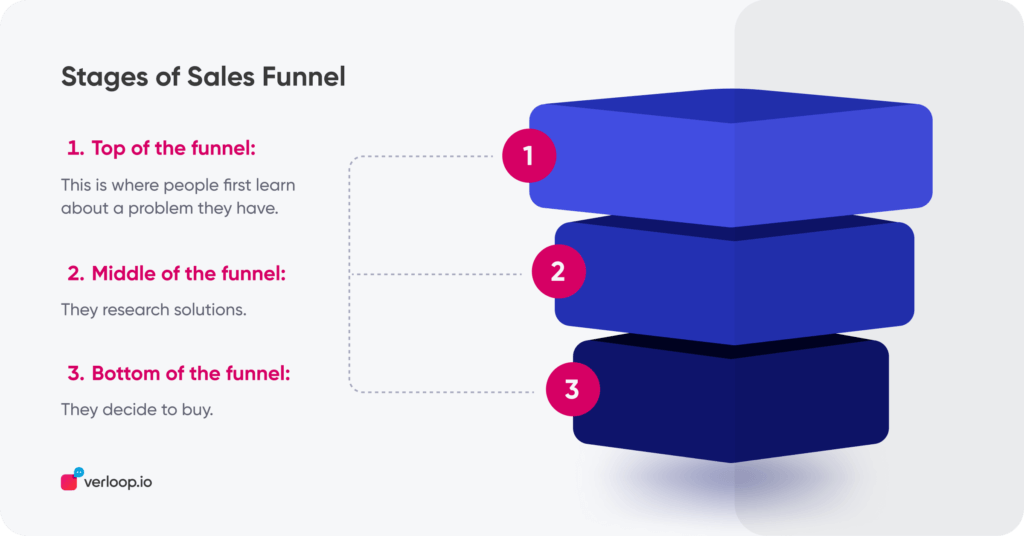
As people visit your website, you guide them toward becoming customers. Some drop out along the way, resulting in a wide top and a narrow bottom.
Funnels aren’t just for tracking sales or sign-ups; they can be used to understand any movement on your website.
Suggested Reading: 5 Effective Ways To Increase Your Conversion Rates
Why Do You Need a Sales Funnel Template?
A sales funnel template acts as a roadmap, helping teams understand where a prospect is in their buying journey and what messaging, content, or engagement tactic is most appropriate at that stage. Without one, businesses often find themselves either overwhelming leads with irrelevant information or failing to follow up when it matters most.
Consider a B2B SaaS company selling HR automation tools. They had plenty of leads coming in through their webinars, but conversions were low. It wasn’t until they mapped a proper sales funnel that they realised most leads were left hanging after the initial touchpoint. By implementing a structured journey with personalised follow-ups, customer case studies, and free trial nudges placed strategically across the funnel, they saw a 34% increase in conversions within three months. The only thing they changed was how they moved leads through the funnel.
This isn’t an isolated case. Research from Forrester found that businesses using structured lead nurturing through a sales funnel generate 50% more sales-ready leads at 33% lower cost. Yet, a surprising 68% of B2B companies don’t actively measure or manage their sales funnel. That’s lost revenue hiding in plain sight.
In 2025, attention is short, choices are plenty, and competition is fierce. A well-defined sales funnel template brings much-needed clarity, efficiency, and alignment to your sales process — turning passive interest into profitable partnerships.
I. Simplify Complex Processes
A customer’s journey through your website can span hours, days, or even months, making it challenging to improve existing systems.
By breaking down complex processes into simple steps, you can identify flaws, test solutions, and enhance performance.
With a sales funnel, you can gain insights like:
- The main source of your website’s traffic
- The stage at which customers drop off the most
- The ideal point in the sales process to close a deal
II. Daily Operational Insights
Humans excel at interpreting visual data. Visualizing data allows you to continually monitor your website’s performance.
A sales funnel provides a comprehensive overview of all your deals at a glance, facilitating clearer insights into your team’s daily operations. This information helps you gauge slow days and prepare for high-value deals, keeping you in control of your sales and marketing efforts.
III. Accurate Financial Forecasting
For businesses with extended sales cycles, quarterly or yearly reviews can be cumbersome. There can be quarters with no sales completed but a full pipeline, or quarters with numerous closed deals but no new leads.
A well-structured sales funnel enables predictive revenue modelling. By applying historical probabilities to each stage, you can calculate future income.
For example, if you have 90 customers in the final stage, each worth $10, with an average conversion rate of 30%, you can anticipate $300 in revenue.
What Are the Stages of a Sales Funnel?
At its core, a sales funnel outlines the journey a potential customer takes — from first discovering your brand to making a purchase (and beyond). While the funnel can vary slightly depending on the business model, most follow a version of these four key stages: Awareness, Interest, Decision, and Action — commonly referred to as AIDA.
1. Awareness
This is where it all begins. A prospect becomes aware of your brand through a blog, ad, social post, webinar, or even a word-of-mouth recommendation. The goal at this stage isn’t to sell — it’s to spark curiosity and attract attention.
2. Interest
Now that they know you exist, it’s time to educate and nurture them. This is where you provide value: through emails, lead magnets, comparison guides, or quizzes. A solid sales funnel template ensures you’re delivering the right message here building trust without overwhelming.
3. Decision
Here, the prospect is considering a purchase. They may be evaluating you against competitors or weighing options. Product demos, testimonials, pricing pages, and personalised offers are critical at this stage. The funnel should reduce friction and help them feel confident in their decision.
4. Action
This is the conversion point — whether it’s a purchase, sign-up, or booking a call. But the funnel doesn’t stop here. A good sales funnel continues to support the customer with thank-you pages, onboarding, and follow-up campaigns to increase lifetime value.
Understanding these stages helps you not only attract leads but move them smoothly through the journey from stranger to loyal customer.
How To Create a Sales Funnel?
Your sales funnel is like a map of how customers move through your website or products. To create this map, focus on four important stages in the sales journey:
- Awareness: This is where customers first find out about you, often through things like blog posts, Facebook ads, or videos.
- Interest: At this stage, you explain the problem and why your solution is important, usually in exchange for their contact info.
- Decision: Now, you convince customers that your solution is the best choice by showing social proof, reviews, and testimonials.
- Action: This is when customers are ready to make a purchase, and you can use things like discounts or free shipping to encourage them.
The way your funnel looks can greatly vary depending on the kind of business you have. A small local store might have a simple funnel, while a B2B business dealing with big clients might have more steps.
5 Best Sales Funnel Templates for You to Consider
Every business has a sales process — but not every business has a sales funnel that works. Whether you’re in SaaS, e-commerce, B2B services, or even education, a well-crafted funnel helps you turn awareness into action, and browsers into buyers. The key lies in designing a journey that matches your audience’s behaviour, not just your internal goals.
To help you build or refine your own strategy, we’ve rounded up five standout sales funnel examples, each tailored to a different type of business model. These aren’t just theories. They’re practical, proven funnels that show how brands attract, nurture, and convert leads in 2025’s ever-evolving landscape.
Let’s dive in and explore which sales funnel template might be the right fit for you.
1. Tripwire Funnel
The Tripwire Funnel is all about turning cold prospects into paying customers — fast. The idea is simple: offer something valuable at a very low price to get the customer to take their first buying step. Once they’ve made that micro-commitment, they’re more likely to trust you, buy again, and eventually upgrade to higher-priced products or services.
In a sales funnel, this might look like a low-cost eBook, a paid webinar, or a mini product — delivered right after a free lead magnet (like a checklist or guide). The low-friction price point builds trust and shifts the prospect’s mindset from freebie-seeker to buyer.
Tripwire funnels work particularly well for digital products, SaaS trials with add-ons, and D2C brands introducing new customers to their ecosystem. When executed right, they boost customer lifetime value and dramatically reduce cost per acquisition.
Steps:
- Create a Landing Page for the Tripwire Offer.
- Set up a Checkout Page for Payment.
- Provide an Upsell to Offer the Core Service.
- Display a Thank You Page with Purchase Details.
- Run Email Campaigns to Follow Up.
2. Quiz Funnel
The Quiz Funnel is a smart, interactive way to qualify leads, segment your audience, and personalise the customer journey — all while keeping engagement high. Instead of asking your visitors to scroll endlessly or fill out a form, you guide them through a fun, value-driven quiz that feels more like a conversation than a conversion tactic.
Here’s how it works: the user lands on your quiz page, answers a series of tailored questions, and based on their responses, you deliver a personalised result — along with a relevant offer, product recommendation, or next step. It’s the ultimate “help me help you” approach.
Let’s say you’re a B2B marketing agency. Instead of pushing your services upfront, you create a quiz titled “What’s Your Marketing Maturity Score?” Visitors answer a few questions, and based on their stage — beginner, scaling, or optimising — you present them with a custom audit, case study, or consultation offer. You don’t just generate leads; you generate context.
The magic of a quiz funnel lies in its ability to segment leads at scale while giving users an experience that feels uniquely tailored. It boosts conversion rates, improves email click-throughs, and builds stronger relevance from the first touchpoint.
Steps:
- Develop a Landing Page with a Quiz.
- Create Sales Funnels for Each Service Based on Quiz Results.
- Set up Checkout Pages for Each Service.
- Display Thank You Pages for Confirmation.
- Implement Email Campaigns for Follow-up.
3. Webinar Funnel
The Webinar Funnel is one of the most powerful tools for building trust, educating leads, and closing high-ticket B2B or service-based deals. It works by offering deep value upfront — usually in the form of a live or on-demand webinar and then guiding attendees down a path that leads naturally to conversion.
Here’s how it plays out: A lead signs up for your webinar, attends it (live or recorded), gains valuable insights, and then receives a follow-up offer tailored to what they just learned. The offer might be a free consultation, a trial, or even direct access to a core service or product. Unlike static landing pages, webinars give prospects face time with your brand — even if it’s pre-recorded — which boosts credibility and connection.
For example, a business coach might host a webinar titled “How to Scale to 7 Figures Without Burning Out”. During the session, they share proven strategies, answer questions live, and pitch a limited-time offer for a group coaching program. That entire journey, from signup to show-up to follow-up, is the webinar funnel in action.
What makes it especially effective is its ability to nurture leads in one sitting while establishing authority. It shortens the sales cycle, qualifies prospects based on attendance and engagement, and creates a sense of urgency through limited-time offers or bonuses.
Steps:
- Create a Landing Page for Webinar Registration.
- Design a Landing Page to Host the Webinar.
- Set up a Sales Page for Offering Your Service.
- Create Checkout Pages for Service Purchases.
- Display Thank You Pages with Confirmation.
- Use Email Automation to Promote the Webinar and Follow Up.
4. Membership Funnel
The Membership Funnel is designed to turn one-time visitors into long-term, recurring customers by gradually introducing them to a paid membership or subscription offering. Instead of going straight for the hard sell, this funnel nurtures trust and builds perceived value over time — making the eventual “yes” feel like a natural next step.
The process usually begins with a free resource or low-commitment opt-in — think a downloadable guide, a mini course, or free community access. From there, leads are introduced to more premium content or benefits hidden behind a paywall, such as exclusive training, ongoing support, templates, or networking opportunities.
Take a fitness coaching brand as an example. They offer a free 5-day workout plan. After sign-up, users are invited to join a members-only platform where they get access to live sessions, nutrition plans, and accountability groups. Because trust and results were built during the free phase, users are far more open to subscribing.
What makes the membership funnel so effective is its ability to deliver ongoing value while increasing customer lifetime value. Plus, with recurring billing models, businesses benefit from predictable, scalable revenue. It’s not just about conversions — it’s about retention.
Steps:
- Design a Landing Page for the Basic Membership Plan.
- Set up Checkout Pages for the Basic Plan.
- Offer an Upsell for the Elite Membership Plan.
- Display Thank You Pages for Confirmation.
- Run Email Campaigns to Encourage Upsell.
5. Conditional Global Funnels for eCommerce
The Conditional Global Funnel is built to serve one purpose: showing the right product, offer, or message to the right customer — no matter where they are in the world. It’s the smart, data-driven evolution of traditional eCommerce funnels, using conditional logic (based on user behaviour, location, device, or referral source) to dynamically shape the customer journey.
In a typical eCommerce funnel, every user might see the same landing page, the same product bundle, or the same upsell. But with a conditional global funnel, someone browsing from New York on their mobile might see a limited-time mobile-only offer for free shipping, while a repeat customer in Sydney sees a loyalty discount on their most purchased category.
Here’s an example: a skincare brand runs ads globally. Instead of sending everyone to the same funnel, the site tailors each step. Visitors from Instagram are shown a special product bundle with influencer picks, while email subscribers land directly on a flash sale page. If someone adds a product to cart and hesitates, an exit-intent pop-up nudges them with a 10% discount — only if it’s their first visit.
This funnel isn’t just responsive, it’s reactive. It adapts in real-time to maximise conversions by removing unnecessary friction and offering highly personalised interactions. For fast-moving eCommerce businesses, the conditional global funnel is what bridges the gap between automation and real-time customer intent.
Steps:
- Establish Conditions for Specific Offers.
- Create Checkout Pages with Relevant Offers.
- Use Email Automation for Follow-up.
6. Product Launch Funnel
The Product Launch Funnel is all about building anticipation, educating your audience, and creating momentum before unveiling a new product or service. It’s designed to nurture leads with value-first content, warm them up to your brand or offer, and then lead them into an irresistible, time-sensitive pitch.
Unlike evergreen funnels, a product launch funnel is often used for limited-time offers, seasonal campaigns, or newly developed features. The goal? To generate buzz, urgency, and a flood of conversions within a short window.
Here’s how it typically unfolds:
You start with a teaser or “coming soon” campaign — this could be a waitlist, sneak peek, or early-access sign-up. Next, you deliver a series of value-packed emails, videos, or live sessions (think: problem-solving content, behind-the-scenes, or testimonials). These assets build desire and address objections before the offer even drops. Finally, when you officially launch, the audience is already primed and excited and more likely to convert.
Let’s say a tech company is launching a new AI-powered CRM. Two weeks before launch, they begin sending emails teasing the product’s benefits, sharing use cases, and inviting users to a live demo. By the time the launch email hits inboxes, there’s already a queue of people ready to sign up.
What makes the product launch funnel so effective is the psychology behind it urgency, exclusivity, and education. It doesn’t just introduce a product. It builds a story around it.
Steps:
- Promote Early Bird Registration for the Launch.
- Set up Landing Pages for Sneak Peek Content.
- Design a Landing Page for the Early Bird Offer.
- Create Checkout Pages for Early Bird Purchases.
- Display Thank You Pages for Confirmation.
- Implement Email Campaigns to Promote and Follow Up.
By using these various funnel examples, you can learn a lot and make your customers happy buyers. With the right knowledge and tools, you can create a strong sales funnel that not only attracts potential customers but also leads them to become happy customers.
After successfully converting these prospects into paying customers, the next crucial phase is retaining them through exceptional customer experiences. That’s where Verloop.io steps in as your trusted ally.
To explore this further and initiate meaningful conversations, schedule a demo with us today.
FAQs
1. What are the 5 stages of the sales funnel?
The typical 5 stages of a sales funnel are: Awareness, Interest, Consideration (or Decision), Action, and Retention. Each stage reflects how close a prospect is to making a purchase and helps tailor your communication accordingly.
2. How can Verloop.io help with optimizing the sales funnel?
Verloop.io can automate lead qualification, capture intent in real time, and nurture leads through AI-powered chat and voice agents. From answering product questions to booking demos and reminding users to check out, Verloop.io ensures no lead slips through the cracks — making every stage of your sales funnel more efficient.
3. What is an example of a sales funnel?
A simple eCommerce funnel might start with a Facebook ad (Awareness), followed by a product page visit (Interest), then cart review (Decision), purchase (Action), and post-sale email or offer (Retention). Each step is designed to move the customer closer to a transaction.
4. How do I build a sales funnel?
Start by identifying your ideal customer journey — from discovery to purchase. Then, create targeted content or offers for each stage: ads or SEO content for awareness, lead magnets for interest, testimonials or demos for decision, and streamlined checkout and follow-ups for action and retention. Use a sales funnel template to map this clearly.
5. What is Step 5 in the sales process?
Step 5 is typically “Close the Sale” — where the prospect finalises the purchase or agreement. It involves addressing final objections, negotiating terms if needed, and ensuring a seamless handoff to onboarding or delivery.
6. What is the sales cycle?
The sales cycle refers to the full process a sales team follows to turn a lead into a customer — from prospecting and outreach to nurturing, pitching, closing, and follow-up. It often mirrors the sales funnel but focuses more on internal actions by the sales team than customer behaviours.




